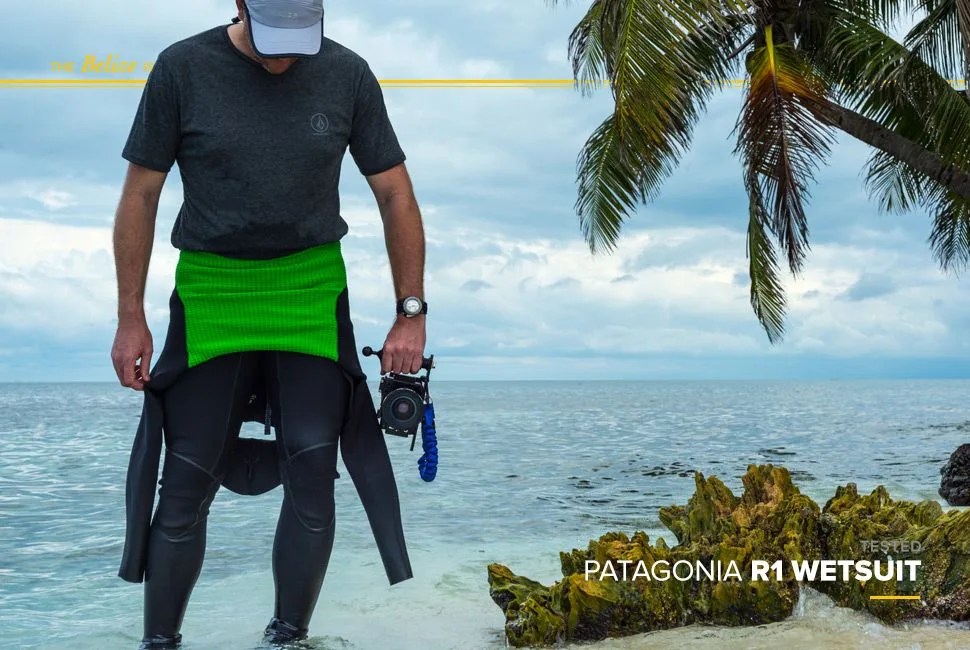Patagonia has always been a company with one foot in the mountains and one in the sea — climbing and skiing one day, surfing and paddling the next. When they introduced wetsuits to their lineup a few years ago, it was a big leap for the company, but not one they were unqualified to make. In fact, their experience building warm, lightweight and bombproof alpine gear transferred well to wetsuits, which we found out recently while testing the R1 wetsuit ($349) during a week of diving in Belize.

Water conducts heat away from the body 20 times faster than air, which is why even a couple dives in tropical waters can leave you feeling chilled. Divers have long known about the need for exposure protection. In the early days, they would contort themselves into ill-fitting, clingy rubber suits, using talcum powder to facilitate entry. In the early 1960s, neoprene wetsuits made their debut — first used by surfers — and were a huge improvement over rubber suits.
Wetsuits work because body heat transfers to the air pockets in the neoprene foam and continues to insulate despite the rest of the suit getting saturated with water. The problem is, colder water demands a thicker suit and a thicker suit is less comfortable; it requires that a diver wear more weight in order to counteract the buoyancy and be able to descend. So, while wetsuits have improved since the 1960s, warmth still equates to bulk. For really cold water, you can don a drysuit, but that requires an additional air hose, additional training and a lot of additional money. For water over 65 degrees, a wetsuit is still the way to go.
Patagonia’s wetsuits are designed, first and foremost, for surfing. Surfing wetsuits differ from their diving brethren mainly in form and features. Zippers are on the back since there are no tanks to snag on and you won’t have to lie on a zipper when you’re paddling out to the break. Surfing suits are also cut more athletically for the greater arm movement required during surfing.
These features made the R1 no less suited for our diving. Perhaps the most distinctive feature of the R1, and of Patagonia wetsuits in general, is the insulation lining. Here is where Patagonia’s background making warm outdoor gear really shines through. If Polarfleece and wool can keep you warm even when wet and hanging off of a rock wall in the Alps, why couldn’t that also be true in a wetsuit paddling out at Maverick’s or diving in a cold current?

